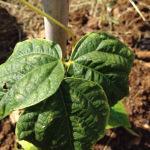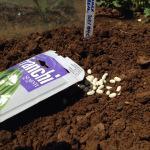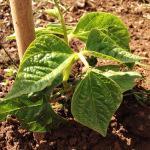Prone to late frosts, cold winds and slugs, now is the time to grow French beans. I planted out my climbing bean Cornetti Meraviglia di Venezia last week, but only sowed Dwarf French bean Boby Bianco in situ in the last few days. The dwarf varieties work well, allowing a bumper crop without the need for supports. They also are the best to grow if you want to extend the season and grow under cover. Beans are best sown into moist soil that is rich in organic matter, a few centimetres deep and initially under cloches. To get a succession of crops, sow every month or so until late summer. As the plants develop and get flowers, make sure that you water regularly, as this will encourage more flowers and thus more beans. A mulch of organic matter around the base of the plants helps to retain the moisture and also gives a nutritional boost to the plants. You can also use a tomato feed (or something similar like comfrey or nettle ‘tea’) to help encourage the development of more pods.



Pick the beans regularly to keep them producing. They are at their best when their slim pods hide the beans seeds perfectly, and the flesh snaps crisply. If you’re unable to devour all the beans available when they’re at their best, just blanch in boiling water for a minute or so and open-freeze, before transferring to freezer bags. They cook brilliantly from frozen when needed.
Beans also do a great job of improving the soil even after their harvest. They enrich the soil by fixing nitrogen in nodules of bacteria on their roots. To capture this nutritional boost, cut off the stems of the plants at ground level when they have finished cropping, leaving the roots to enrich the soil.

